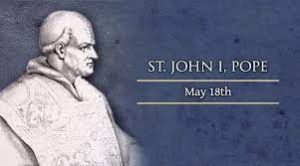EASTER WEEK 06 04
Prophetic Hope
(Acts 18:1-8; Ps 98; Jn 16:16-20)
***************************************
A title for this homily, Prophetic Hope, emerged naturally from the readings. First, in the Gospel, Jesus predicts his own passion, death, resurrection and the Pentecost event: “A little while, and you will no longer see me, then you will see me; you will weep and mourn, but your pain will turn into joy.”
This language is typical of St. John, the theologian of symbolism, memory and mysticism. The full pattern of what Jesus is alluding to is his passion, death, resurrection, appearances to his disciples, his ascension and finally, the sending of the Spirit at Pentecost, the event that would complete the resurrection and transform the fearful disciples into joyful missionaries full of hope.
Psalm 98, for its part, takes on full meaning when seen in the light of Jesus arisen from the dead and the sending of his Spirit on the early Church. One wonders what the psalmist had in mind in composing this psalm. Could he have intuited or in some mystical way foreseen this future development, so well expressed in the psalm?
What could describe the resurrection of Jesus and the sending of the Spirit at Pentecost better than the words, “The Lord has revealed to the nations his saving power” or “O sing to the Lord a new song, for he has done marvelous things.” Every line of the rest of the psalm fits in perfectly with this awareness: God has won the victory; has revealed his vindication; has remembered his steadfast love for Israel.
The words of Jesus in the gospel about our pain turning to joy certainly fulfill the invitation of the psalmist to “make a joyful noise to the Lord all the earth; break forth into joyous song and sing praises, for all the ends of the earth have seen the victor of our God.” Even as we read the words of that psalm, and sing it in our liturgy, feelings of joyful hope naturally surface from within our hearts, knowing that it has all been fulfilled in Jesus’ resurrection.
What should our response be? We could not ask for a better model than St. Paul who, in the first reading, argues in the synagogues, proclaiming the word about Jesus risen and testifying to the Jews and Greeks that Jesus was the Messiah. When he was opposed and his message of new life was resisted, Paul simply moved on to a more receptive group, symbolized by Crispus, the synagogue official, who became a believer in the Lord.
To this day, our joyful task is to proclaim Jesus as Lord and Messiah to an increasingly secular and unbelieving world, and to live lives that reflect our belief – free from compulsion, fear, sin and resentment.
We are to proclaim that as Messiah, Jesus came to redeem and sanctify, his two-fold mission – to forgive us and to heal us. That he accomplishes through the gift of his Spirit living and working through the Church, the Body of Christ. As Lord, Jesus is reigning over all of creation, and filling the hearts of those who believe in him with joyful hope, for the best is yet to come.
The world more than ever needs to hear this message, as the devastation of an unbelieving secular society grows all around us in so many ways: more and more abortion, a growing acceptance of euthanasia, an isolation of any spirituality from the public sphere, resistance to Catholic education, loss of any notion of the common good politically, an opioid epidemic that is a spiritual crisis beyond political and secular attempts to solve, and a futile, stubborn, individualism that tries to find meaning and happiness in one’s self without community or others.
 Today we honour St. John I. When he became pope in 523, Italy was ruled by an Arian, Theodoric the Goth, who had reversed his policy of tolerance towards Christians because of trouble between Rome and the emperor of Constantinople, Justin I. When his subjects appealed to him, Theodoric organized a delegation to negotiate with the emperor and ordered a reluctant Pope John to head the mission. Enthusiastically received, John did win some concessions, but Theodoric was not satisfied. In 526, when the delegation returned to Ravenna, the pope and his entourage were imprisoned. John died soon after, probably of starvation.
Today we honour St. John I. When he became pope in 523, Italy was ruled by an Arian, Theodoric the Goth, who had reversed his policy of tolerance towards Christians because of trouble between Rome and the emperor of Constantinople, Justin I. When his subjects appealed to him, Theodoric organized a delegation to negotiate with the emperor and ordered a reluctant Pope John to head the mission. Enthusiastically received, John did win some concessions, but Theodoric was not satisfied. In 526, when the delegation returned to Ravenna, the pope and his entourage were imprisoned. John died soon after, probably of starvation.
With St. John I as a model of faith, joyful hope and love to guide us, and with the Eucharist to strengthen us, let us strive to be missionaries of prophetic hope to our society that so much needs to hear this message.



